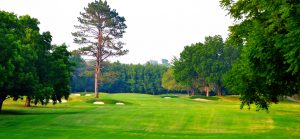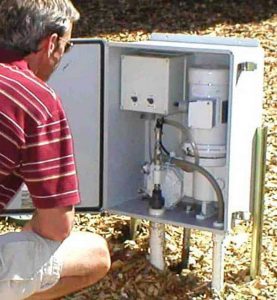Are you having difficulties lowering your golf course maintenance budget? The upkeep for a golf course is substantial and very demanding. Many times it stays in the family name or under a company’s care for decades, generation after generation. That is because it is a prosperous and fulfilling experience. As an owner of a golf course, or operating very close to one, there is a need to ensure the life of the golf course turf. You want your course to continue to blossom and entertain the guests. Turf Feeding is very understanding of this, we know that is a number one priority.
Issues in maintaining the life of your courses, meaning they cannot stay green or they are growing at strange rates, may drastically affect this priority. The costs to continuously replant, grow, and stabilize the life of your course will be high and overwhelming. However, our methods of fertigation have been known to combat this. Together, we can work to mitigate your rising costs and even reverse the amount of maintenance your budget has to account for.

Why Fertigation Works
When you are watering your turf, the most likely method is to fertilize the soil first and then add a steady cycle of water to encourage the growth. This process has been normalized and used for many centuries. The success could not be understated, however, we have entered a new era. Our technological advances give us access to the plant’s properties and we are seeing for the first time how the plants are actually living off of this “diet”.
Interestingly enough, there have lots of studies revealing that there is a hindrance in this method. This would refer to how water affects the process. Through the natural forces within the soil, such as gravity or low density, any sort of water that is provided to the greens may reach the plants but they won’t be able to stay there. The weight of the water has been shown to actually fall past the root zone of the plant, where more than 50% resides. Out of reach of the plant.
This is a very important aspect to note as the fertilizer is water-soluble and needs to be activated for the plant to absorb the nutrients. However, when the water is pulled lower and lower into the ground, it is also taking that fertilizer with it. As research has returned, we are noting that as much as 50% of the fertilizer is also lost through this process.
So as it occurs, the plant is receiving minimal amounts of water and fertilizer at the same price of a full dose. Through this normalized process, we have found that you are losing the majority of your resources. Additionally, we have found that the long term effects of this will actually reduce the plant’s ability to sustain growth and even life. Not only is the nutrient-depleted soil unsupportive, but the soil itself is loosening every watering cycle. This causes more and more nutrient loss from runoff.

What Does This Mean For My Golf Course?
As a business, the main objective is to achieve successful operations through continuously optimizing the budget and methods for success. Success, in this case, is an increase in profits at each quarter. However, when you face increasing costs to upkeep the turf it can be difficult. It is no surprise that it is costing more to maintain the survival of a plant rather than to foster its growth. When the plant is in a natural state of growth, there is no need to procure more fertilizer or alternative solutions. Yet, a good deal of these golf clubs are still troubled with this problem.
Our fertigation system combines the fertilizer with the irrigation line to create sweet water. This means the plants would be receiving nutrient heavy hydration. So the turf absorbs the chemicals immediately. Through utilizing this procedure, the injection rates do not increase but rather they become more effective. Therefore, it reduces the need for external additions.
Now that you are able to conduct successful cycles of fertigation, the plants will restabilize their growth patterns. In our past, golf courses that we have worked with witness incredible reversals of their turf. They note a return of color back to the turf, and that the soil is a lot stronger and reliable. Overall, the process has reinstated homeostasis for the plants and they are no longer starving. The golf course will be able to operate at optimal health and provide beautiful greens and fairways to their guests.

Will This Help Reduce My Maintenance Budget, too?
So let’s say we have applied fertigation to your course. This means you now have a much more effective and cheaper process of feeding and hydrating the turf. Naturally, you will have saved money simply by the adjustment alone. It will be cheaper than buying additional resources and overstaffing labor to re-mulch and place new turf on the fields. However, the immediate price slash is one thing to not, but the long term benefits are something even more impressive.
To give an example, we would like to showcase the Boiling Springs Golf Course, one of our long-time clients. In 2015 we first began work with them. At that time their maintenance budget was $50,877.71. For those that don’t know much about the golfing industry, maintenance costs will typically use around 30% of the operating expenses. For a small family owned Oklahoma golf course, those costs can be very sensitive. If they rise too high, it could be detrimental.
After applying our fertigation to their irrigation system, they noticed immediate changes. Throughout working with their course for a full year, we registered greener stronger turf, sturdier and more fertile soil, and less maintenance overall. To put this in fiscal terms, Boiling Springs Golf Course saw their maintenance budget decrease by over 50%. After paying on average $50,000 per year, they now only have to pay $25,000.
Contact Us
As you can see, our process is revolutionary and extremely effective. We can revitalize your course for good and promise a reduction in your costs. Healthy plants are a side effect to good agriculture, and if we’re providing one side of the equation, you’re sure to get the solution you’re looking for! Come let us work with your country club golf course today. We’re operating out of Texas, but we work worldwide. We’ve even helped revive golf courses in Europe. There is no hill we can’t make greener! If you want to get in contact with us you can call (832) 321-3311, visit our website, or if you’re in the area, come and us at 19915 Morton Rd, Suite 200, in Katy, TX 77449. We can’t wait to work with you!